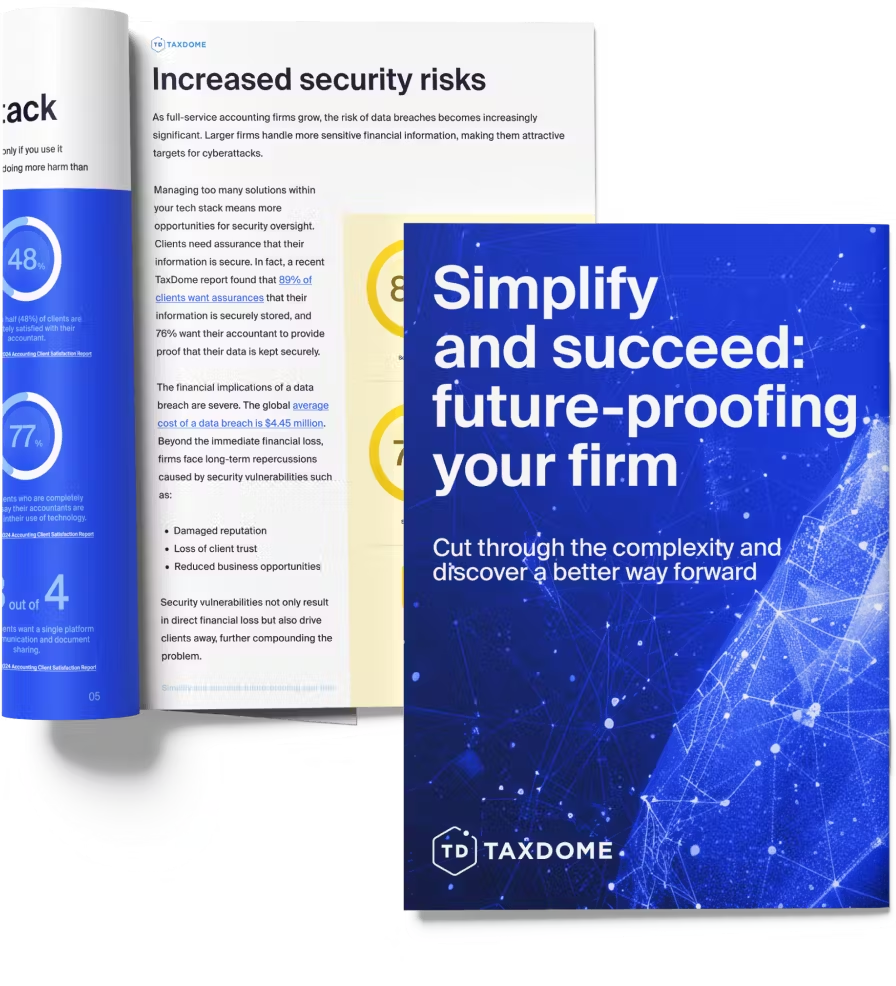
We are now right in the middle of the tax season for you – and the hottest period for accountants, bookkeepers and tax professionals in general.
As with every tax season, the most important thing to remember is the deadline by which all documents should be filed.Depending on whether you’re filing taxes for you and your family or your business, the deadline might differ (not so) slightly. So in this article we’ll go over all the important dates you should keep in mind.
When are my federal taxes due?
The short answer is: April 18. While most years the deadline is April 15 (it has been this way since 1955), this year is a bit different for two reasons: April 15 falls on a Saturday and April 17 is Emancipation Day, a federally recognized holiday. As a result, the deadline has been moved to Tuesday, April 18.
Exceptions to federal tax deadlines
There are three states — California, Georgia and Alabama — where the deadline has been moved to October 16. These three states have been heavily affected by the January floods, and so the IRS officially extended the deadline to individuals and businesses caught in the crosshairs.
When are my state taxes due?
A slightly trickier question, as they are not always in sync with the federal deadlines. This year 37 of the 50 states take the lead from the federal government, setting the deadline for April 18. As you can see below, there are 13 exceptions. These fall under two categories: some have a different deadline, and others do not require taxpayers to file state taxes at all.
| Simply another deadline | Not required to file state taxes at all |
| Iowa (May 1) | Alaska |
| Virginia (May 1) | Florida |
| Delaware (May 2) | Nevada |
| Louisiana (May 15) | New Hampshire |
| South Dakota | |
| Tennessee | |
| Texas | |
| Washington | |
| Wyoming |
Other important deadlines to consider
Quarterly deadlines
If you report your earnings on a quarterly basis, the deadline for that is the 15th of the month following the end of the quarter — unless it falls on a weekend or a holiday. For 2023, the quarterly deadlines are: January 17, April 18, June 15 and October 16.
January 31
- W-2 form from employers to their employees (detailing how much employees earned in 2022 and how much withholding tax has been paid)
- Some 1099s (1099-NEC, 1099-K and 1099-INT) — if you earned money from interest or freelance work in 2022, or used contractors in your business
February 15
- Form W-4: that’s a form an employee completes to inform his employer how much federal income tax should be withheld. If you qualify for an exemption in 2023, you only need to complete certain parts of the form
- Some 1099s: 1099-Bs (for income earned from some securities) and 1099-Misc should be sent to you by this deadline
March 15 — for small businesses
Small business owners have different deadlines, depending on how the business is organized. C corporations, sole proprietors, single-member LLCs and LLCs taxed as corporations are required to file by April 18. However, some small businesses have an earlier calendar date to do the same. The following types of businesses should file by March 15 instead:
- Partnerships
- S corporations
- LLCs taxed as partnerships
Unsure how to best prep for the upcoming deadlines? Find a professional tax preparer in 2 clicks.
Can I file for an extension?
Yes, you can. You’ll need to file a 4868 form to ask for an extension until October 16 — but you’ll need to file the extension with the IRS by the April 18 deadline nonetheless. The good news is that the IRS will give you an extension just for asking: you don’t need to give a specific reason.
However, you should keep in mind that filing for an extension simply allows you to complete the paperwork six months later — but the obligation to pay taxes by April 18 is going nowhere.
How can I get a tax refund?
Did you know that if the federal government owes you money for overpayment in the last three years, you can still get it back? A good accountant can help you go back through your taxes to see if anything was missed. After those three years expire, the National Treasury will claim the money.
If you ask for a refund electronically, it should be issued within 21 days. Filing using paper will typically mean a longer response time of up to six months.
What happens if I miss the deadline?
The only way you can avoid a penalty for filing late is if the IRS owes you a refund. Otherwise you’ll be hit with a failure-to-file penalty, which stands at 5% from the sum you owe — monthly. It’s much more severe than the failure-to-pay penalty, which will eat into your budget 0.5% per month.
Both failure-to-file and failure-to-pay penalties can amount to a devastating total of 25% apiece, stretched over a period of 5 months. When both charges are applied simultaneously, the combined total still amounts to 5% each month, as the IRS subtracts the smaller penalty from the bigger.
However, if you realize you are going to miss the deadline because you can’t pay the amount owed, keep in mind that you can always contact the IRS and set up a plan for payment in installments. Also, it’s better to pay something before the deadline than nothing at all.
Finally, even if the IRS owe you a refund, we would still recommend filing on time for the following reasons:
- If you don’t, you might miss out on tax credits or a refund
- It might affect how much social security benefits you might get in the future

Money you’ll owe the IRS in penalties will pile up if you don’t pay on time
Smart moves to consider moving forward
Max out your 401(k) fund by December 31, 2023
The good news here is that the money you contribute towards your 401(k) is not taxable. So if you earn, say, $40,000 per year and put $10,000 in your 401(k) fund, you’ll only owe the IRS taxes on the remaining $30,000.
Further good news is that some employers offer to match your contribution (at least partially), which essentially means you get an extra chunk of tax-free money However, keep in mind there’s an upper limit to how much you can contribute annually. It’s maxed out at $22,500 in 2023 — or up to $30,000 if you are over 50 years of age.
The downside to the traditional 401(k) plan is that while the contribution is not taxable right now, withdrawals from the account will be taxed as ordinary income. To avoid this, you can opt for a Roth 401(k) retirement plan — if your employer offers the option. You contribute to it with after-tax dollars, but withdrawals will be tax-free. The amount of money you can put into it is exactly the same as in the traditional 401(k).

There are two possible 401(k) plans: traditional and Roth.
Set up an Individual Retirement Account (IRA)
This is an account that has nothing to do with your employer. It’s an individual account you open yourself (at a bank, investment company or through a broker) to save for, well, retirement. It’s primarily popular among self-employed individuals.
An IRA comes with its own limitations of course, the most important being the amount you can contribute annually. For 2023 it stands at $6,500, and $7,500 if you’re 50 or older.
There are several types of IRA too: the traditional and Roth being the most popular picks. The traditional is fully tax-deductible (unless you or your spouse have a 401(k) retirement plan at work) and works pretty much the same way a 401(k) does — except the contribution limits are lower.
The Roth IRA works just like the Roth 401(k) retirement plan: you contribute to it with after-tax dollars and enjoy tax-free withdrawals. But there’s (potentially) another issue: you can only contribute the full amount to a Roth IRA if your income is below $138,000. The amount you can contribute gradually decreases if you earn between $138,000 and $153,000; above the latter threshold, you can’t make contributions at all.
Contribute to your health savings account
If you have a high-deductible health plan, you can contribute a portion of your money towards a separate health savings account using your pre-tax money. The upper limit in 2023 stands at $3,850 for individuals and $7,750 for families. You can throw in an extra $1,000 if you are over 50.
The neat thing about the health savings account is that leftovers from previous years just roll into the next one. You won’t lose this money if you haven’t used it.

A health savings account allows you to reduce the taxable income amount.
Conclusion
For income tax, the most important date you should keep in mind this tax season is April 18. Federal taxes are due then — as well as most state ones. Business owners should keep in mind that depending on how they are structured, taxes may be due on March 15.
However, you can get an extension until October 16 if you are running late with the paperwork — and you automatically get one if you or your business suffered from flooding in California, Georgia or Alabama. Just don’t forget you still have to make the payment on time even if you file your tax forms in October.
April 18 is also the date you should file if the IRS owes you a refund for any of the last three years. If you file electronically and choose direct debit, you should see the money within three weeks.
Try your best to make the deadlines. If you are owed a refund, missing a deadline is not a big deal. However, if you owe the government money, make sure you pay on time or get on a payment plan, or you will have to face interest and penalties.
Finally, there are several things you can do to lower your taxable income for 2023. The smartest moves include maxing out your 401(k) retirement plan, your Individual Retirement Account and/or your health savings account.

Thank you! The eBook has been sent to your email. Enjoy your copy.
There was an error processing your request. Please try again later.
What makes the best accounting firms thrive while others struggle to keep up? We analyzed our top 20 TaxDome firms, representing over $100M in combined revenue, to uncover the strategies driving their success.



